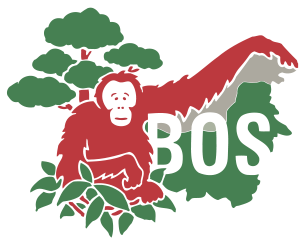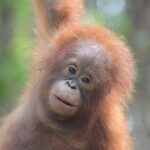COMMON, BUT STILL SPECIAL
The Ficus racemosa or, as it is commonly known, the cluster fig tree can be found growing throughout the Kehje Sewen Forest in East Kalimantan, where we release rehabilitated orangutans.
It grows in lowland, tropical forests, mostly along sources of water. This tall tree has a significant role, providing canopy cover for young plants as well as a home and a buffet for forest animals.
The fruit of the Ficus racemosa is, in fact, not an actual fruit; it is a flower that enlarges at the base and then closes to form a fruit-like sphere. The flower’s stigma is encased, and only specific insects can pollinate it.
In the Kehje Sewen Forest, Ficus racemosa trees usually grow around the banks of rivers. The trees will bear fruit throughout the year when in sufficiently humid areas. However, during drier times, they may lose their leaves.
Our Post-Release Monitoring (PRM) team from Camp Nles Mamse frequently sees the flowers or fruits of this tree while out on forest patrols. Curious, our team members recently decided to eat some and found that the fruit was rather bland, like other forest figs they had tasted before. No wonder orangutans don’t particularly like eating them!
In other parts of the world, however, this fruit is pickled for human consumption and can aid in treating diarrhea, dysentery, hemorrhoids, and the healing of wounds. In addition, the tree has strong and widespread roots, helping maintain soil stability and prevent landslides in sloping areas.
The various uses of this tree species make us appreciate its existence even more. However, while the Ficus racemosa is indeed a common tree found throughout the forest, we must still ensure its protection. After all, it does have its own unique purpose and charm!







